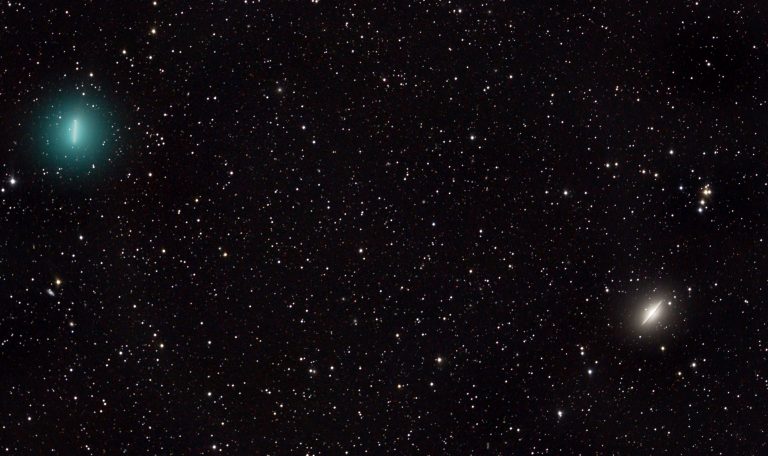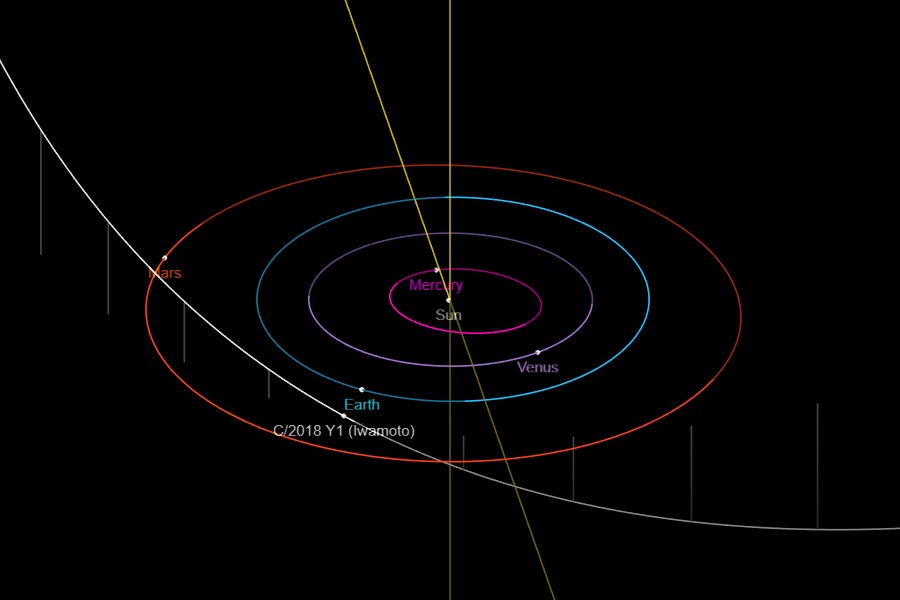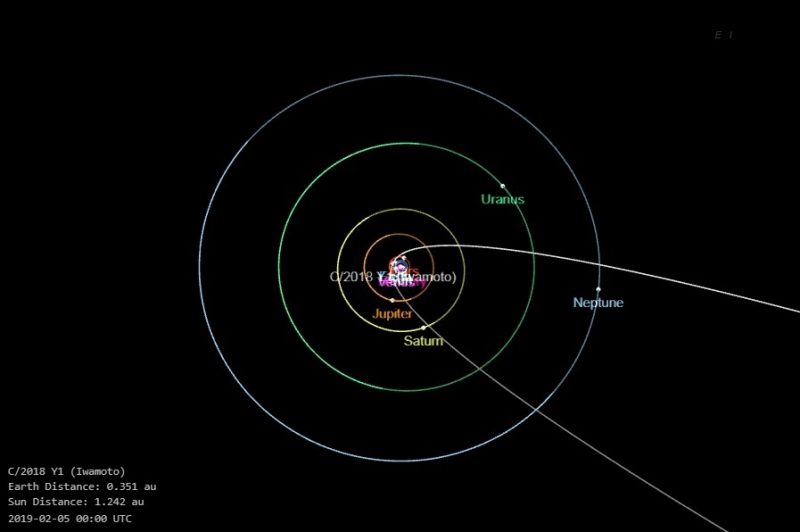|
|
Post by grumpybill on Feb 9, 2019 21:53:11 GMT -5
|
|
|
|
Post by parfive on Feb 10, 2019 0:52:35 GMT -5
grumpybill Bill, I don’t think Iwamoto found the comet almost two months ago using binoculars. I think the term refers to a comet’s potential visibility to us when it passes much nearer to earth. For example, earthsky.org just updated their article on the comet February 3rd with . . . Update: Observers report it is now visible in binoculars!
|
|
agatemaggot
Cave Dweller 
Member since August 2006
Posts: 2,195
|
Post by agatemaggot on Feb 10, 2019 2:33:56 GMT -5
Did anyone see the Comet that passed by us in the mid 60's (1965) ? It looked almost big as the Moon and completely filled up the Eastern sky. It was in late November if I remember right and was impossible to miss, it came by about 2:00 AM. I Was headed for the Mississippi to go Walleye fishing and topped the Bluffs overlooking the River and the darn thing was
lighting up the area like a full moon on a Winter night !
|
|
|
|
Post by 1dave on Feb 10, 2019 5:32:29 GMT -5
grumpybill Bill, I don’t think Iwamoto found the comet almost two months ago using binoculars. I think the term refers to a comet’s potential visibility to us when it passes much nearer to earth. For example, earthsky.org just updated their article on the comet February 3rd with . . . Update: Observers report it is now visible in binoculars! This can be read several ways and should have been more clearly expressed. A PERIOD after binoculars would have removed all ambiguities.  Above: Comet Iwamoto (C/2018 Y1), shows off a pretty, greenish coma at the upper left in this telescopic field of view. Taken on February 4 from the Mount John Observatory, University of Canterbury, the 30 minute long total exposure time shows the comet sweeping quickly across a background of stars and distant galaxies in the constellation Virgo. The long exposure and Iwamoto’s rapid motion relative to the stars and galaxies results in the noticeable blurred streak tracing the the comet’s bright inner coma. In fact, the streaked coma gives the comet a remarkably similar appearance to Messier 104 at lower right, popularly known as the Sombrero Galaxy. The comet, a visitor to the inner Solar System, is a mere 4 light-minutes away though, while majestic Messier 104, a spiral galaxy posing edge-on, is 30 million light-years distant.  From NASA JPL, this image shows the position of the comet when it makes the closest approach to Earth on Feb 12th.  |
|
|
|
Post by grumpybill on Feb 10, 2019 7:50:56 GMT -5
grumpybill Bill, I don’t think Iwamoto found the comet almost two months ago using binoculars. I think the term refers to a comet’s potential visibility to us when it passes much nearer to earth. For example, earthsky.org just updated their article on the comet February 3rd with . . . Update: Observers report it is now visible in binoculars! I read the article differently, but you could be right. My point remains: What if this fast moving projectile was aimed more directly at us? Two months isn't much time to plan and launch something to deflect it...if that's even possible. |
|